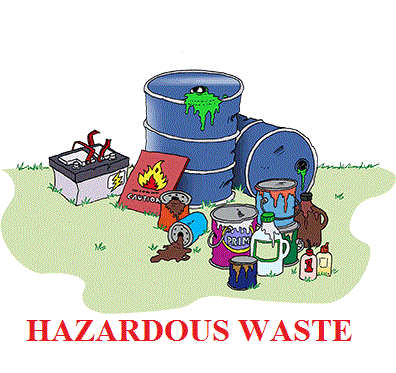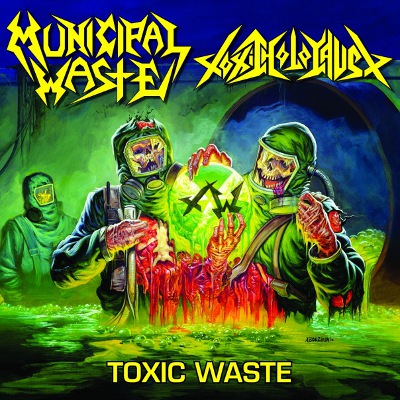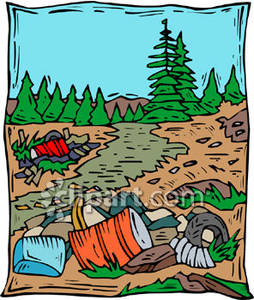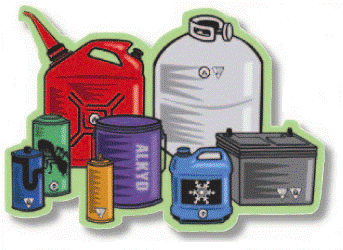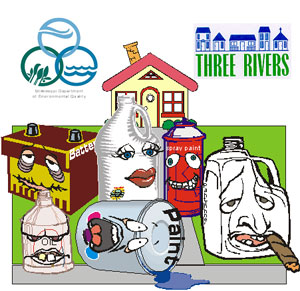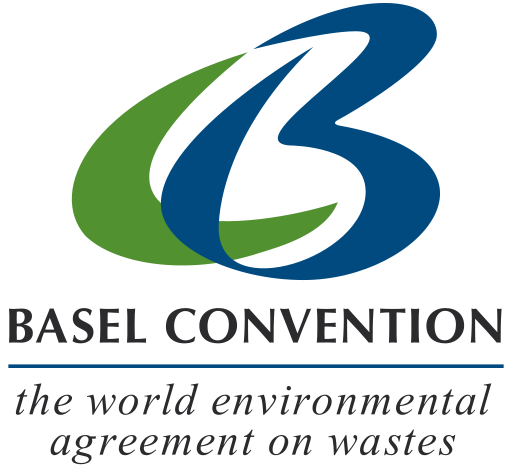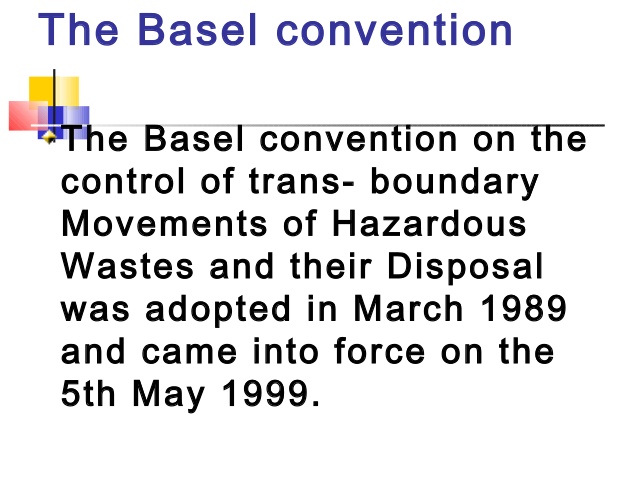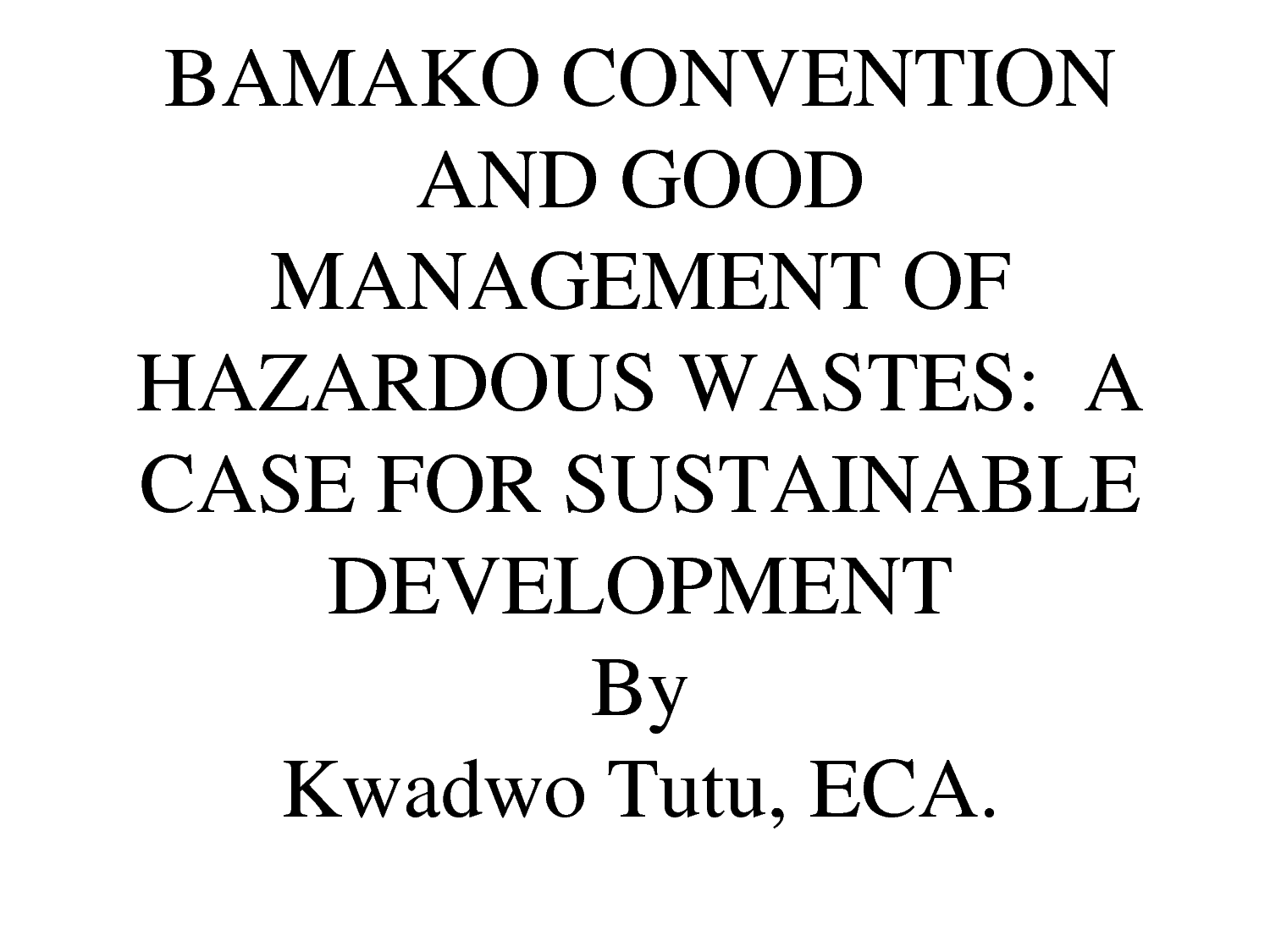Convention and Treaties:
Convention and Treaties:
A convention is a special type of treaty or agreement between many countries. Many countries of the world begin discussions on a global issue and reach a consensus regarding procedures and actions they all agree to follow.
Treaty is any written agreement signed by a few countries or international organizations. Signatories to treaties accept to follow certain rules and obligations and also agree to take liabilities for any failure on their part. After the establishment of UN, countries enter into treaties that are ratified by the United Nations as this international body has been given this special power by the member countries of the world. All modern treaties, especially those entered upon by member countries after 1969 are governed by international rules as per Vienna Convention on the Laws of Treaties (VCLT).
• A convention is a special type of international treaty.
• A treaty comes into force as an attempt to end conflict or disagreement between a few countries whereas a convention is an attempt by many countries to discuss global issues and reach and agreement to be followed by signatories.
• Convention is a process that begins with deliberations and ends in an agreement that is drafted and ratified by member countries. On the other hand, a treaty is signed straight away by the members.
Aspects
Hazardous waste is waste that is potentially harmful for health or dangerous for the environment. Hazardous wastes can be found in the form of liquids, solids, gases, or sludge’s. They can be discarded commercial products, like used battery wastes, Medical toxic wastes, cleaning fluids or pesticides, or the by-products of manufacturing processes.
It is characterized as follow:
- Ignitability
- reactivity
- corrosivity
- toxicity
- Listed hazardous wastes are materials specifically listed by regulatory authorities as a hazardous waste which are from non-specific sources, specific sources, or discarded chemical products
For more detail please click on link below:
REGULATIONS GOVERNING HAZARDOUS WASTE MANAGEMENT
The Hazardous Waste's Management and Handling Rule's 1989 India
(As amended on may 20, 2003)
Schedule - 1: List of hazardous wastes,
(36 processes)
Schedule - 2: List of waste substances with concentration limit,
Schedule - 3: List of wastes applicable for imports and exports,
Schedule - 4: List of non-ferrous metal wastes applicable for registration of recyclers,
For more detail please click on link below:
HAZARDOUS WASTE MANAGEMENT AND HANDLING RULE 1989
HAZARDOUS WASTE MANAGEMENT AND HANDLING RULE 1989, AMENDED 2003
Universal wastes
Universal wastes are special category of hazardous wastes
- generally pose a lower threat relative to other hazardous wastes
- Are ubiquitous and produced in very large quantities by a large number of generators.
Some of the most common "universal wastes" are: fluorescent light bulbs, some specialty batteries (e.g. lithium or lead containing batteries), cathode ray tubes, and mercury-containing devices.
Universal wastes are subject to somewhat less stringent regulatory requirements and small quantity generators of universal wastes may be classified as "conditionally exempt small quantity generators" (CESQGs) which releases them from some of the regulatory requirements for the handling and storage hazardous wastes.
Household Hazardous Waste
Household Hazardous Waste (HHW) (also referred to as domestic hazardous waste or home generated special materials) is waste that is generated from residential households. HHW only applies to wastes that are the result of the use of materials that are labeled for and sold for "home use". Wastes generated by a company or at an industrial setting are not HHW.
The following list includes categories is often applied to HHW. It is important to note that many of these categories overlap and that many household waste can fall into house hold categories:
- Paints and solvents
- Automotive wastes
- Pesticides (insecticides, herbicides, fungicides, etc.)
- Mercury-containing wastes
- Electronics (computers, televisions, cell phones)
- Aerosols / Propane cylinders
- Caustics / Cleaning agents
- Refrigerant-containing appliances
- Some specialty Batteries (e.g. lithium, nickel cadmium, or button cell batteries)
- Ammunition
For more detail please click on link below:
ENVIRONMENTAL MANAGEMENT OF INDUSTRIAL HAZARDOUS WASTES IN INDIA
Final disposal of hazardous waste
Some hazardous wastes were disposed of in regular landfills. This resulted in unfavorable amounts of hazardous materials seeping into the ground. These chemicals eventually entered natural hydrologic systems. Many landfills now require countermeasures against groundwater contamination, an example being installing a barrier along the foundation of the landfill to contain the hazardous substances that may remain in the disposed waste. Currently, hazardous wastes must often be stabilized and solidified in order to enter a landfill and many hazardous wastes undergo different treatments in order to stabilize and dispose of them. Most flammable materials can be recycled.
Recycling
Portland cement
Incineration, destruction and waste-to-energy
Hazardous waste landfill (sequestering, isolation, etc.)
Related links
- Toxic waste
- Bamako Convention
- Brownfield Regulation and Development
- Environmental remediation
- Gade v. National Solid Wastes Management Association
- Household Hazardous Waste
- List of solid waste treatment technologies
- List of Superfund sites in the United States
- List of topics dealing with environmental issues
- List of waste management companies
- List of waste management topics
- List of waste types
- Mixed waste (radioactive/hazardous)
- National Priorities List (in the US)
- Pollution
- Radioactive waste
- Recycling
- Retail hazardous waste
- Superfund
- Toxicity characteristic leaching procedure
- TOXMAP
- Triad (environmental science)
- Vapor intrusion
E-WASTE IN INDIA
Electronic waste or e-waste describes discarded electrical or electronic devices. Used electronics which are destined for reuse, resale, salvage, recycling or disposal are also considered as e-waste. Informal processing of electronic waste in developing countries may cause serious health and pollution problems, as these countries have limited regulatory oversight of e-waste processing.
Electronic scrap components, such as CRTs, may contain contaminants such as lead, cadmium, beryllium, or brominated flame retardants. Even in developed countries recycling and disposal of e-waste may involve significant risk to workers and communities and great care must be taken to avoid unsafe exposure in recycling operations and leaking of materials such as heavy metals from landfills and incinerator ashes.
"Electronic waste" may be defined as discarded computers, office electronic equipment, entertainment device electronics, mobile phones, television sets, and refrigerators. This includes used electronics which are destined for reuse, resale, salvage, recycling, or disposal. Others are re-usables (working and repairable electronics) and secondary scrap (copper, steel, plastic, etc.) to be "commodities", and reserve the term "waste" for residue or material which is dumped by the buyer rather than recycled, including residue from reuse and recycling operations. Because loads of surplus electronics are frequently commingled (good, recyclable, and non-recyclable), several public policy advocates apply the term "e-waste" broadly to all surplus electronics. Cathode ray tubes (CRTs) are considered one of the hardest types to recycle.
For more detail please click on link below:
E-waste (Management) Rules, 2016
INTERNATIONAL CONVENTION OF HAZARDOUS WASTE MANAGEMENT
Basel Convention
The Basel Convention on the Control of Transboundary Movements of Hazardous Wastes and Their Disposal is a global environmental treaty that strictly regulates the transboundary movements of hazardous wastes. Administered by UNEP, it obliges Parties to the Convention to ensure the environmentally sound management of hazardous wastes, particularly in their disposal. The Convention, adopted on 22 March 1989, came into force on 5 May 1992. The Treaty recognizes that the most effective way of protecting human health and the environment from the danger posed by such wastes is to reduce their generation to a minimum and to minimize their hazard potential, while ensuring the environmentally sound management of hazardous waste. The Basel Convention stipulates three main interdependent and mutually supportive goals:
- Transboundary movements of hazardous wastes should be reduced to a minimum.
- Hazardous wastes should be treated and disposed of as close as possible to their source of generation.
- Hazardous waste generation should be reduced and minimized at the source.
Basel Convention deals with the trans-boundary movement and disposal of hazardous wastes as well as other chemical wastes by regulating and controlling the movement of scheduled hazardous wastes from OECD countries to non-OECD countries. India ratified the convention in 1992 showing India’s commitment to solve the problem of transboundary movement and disposal (or dumping) of hazardous wastes through international cooperation. Restrictions imposed by the Convention aim at encouraging the signatory countries to reduce generation with proper treatment and disposal in an environmentally safe manner. The Rotterdam and Stockholm Conventions also aim at reducing or eliminating various types of hazardous emissions. Though the Basel Convention banned the export of hazardous wastes, it is not putting an import ban of such wastes. After ratification of this Convention, if India desires to import hazardous wastes, it will be unable to source these wastes from OECD countries because of the ban. However, the Convention is unable to prevent the inflow of hazardous wastes into India from countries that have not ratified the agreement. USA is a major exporter of hazardous wastes into India. USA not being party to the Basel Convention can still export hazardous wastes to India. The same is true for many other developed countries in the north, which are not a party to the Convention and can send huge volume of hazardous wastes to India. Industrialized countries want to dump their wastes in developing countries such as India due to strict regulations of disposal and management of such wastes in their own country. In February 1993, the council adopted a regulation on the supervision and control of shipment of wastes within, into and out if the European Community. This provides states of the community and EEC itself with an effective legal tool for implementing the Basel Convention. In 1992, the senate of the united States Congress gave its advice and consent for ratified of the Basel Convention. Final ratification is expected
1. The generation of hazardous wastes as well as their transboundary movements shall be reduced to a minimum. The wastes should be disposed of as close as possible to their source of generation.
2. Every State has the sovereign right to ban the import of hazardous wastes Parties to the Convention shall not allow any transboundary movement of hazardous wastes to a state that has prohibited their import. Transboundary movements shall also be prohibited if the exporting State has reason to believe that the wastes in question will not be managed in an environmentally sound manner.
3. A party shall not permit hazardous wastes to be exported to a non-party or to be imported from a non-party unless it is in accordance with bilateral, multilateral, or regional agreements or arrangements, the provisions of which are no less environmentally sound than those of the Basel Convention.
4. The state of export shall not allow a transboundary movement of hazardous wastes to commence until it has received the state of import's written consent, based on prior detailed information of the state of import, as well as of any state of transit.
5. When a transboundary movement of hazardous wastes carried out in accordance with the Convention cannot be completed in an environmentally sound manner, the state of export has the duty to ensure re-importation of the wastes.
6. Transboundary movements of hazardous wastes that do not conform to provisions of the Basel Convention are deemed to be illegal traffic. The Convention states that "illegal traffic in hazardous wastes is criminal." A state responsible for illegal movement of hazardous wastes has the obligation to ensure their environmentally sound disposal by re-importing the wastes or otherwise providing for their disposal. Every party shall introduce national legislation to prevent and punish illegal traffic in hazardous wastes.
With the Basel Convention the world community has the opportunity to implement a truly global legal instrument dealing the control of transboundry moments of hazardous wastes and their disposal. The Basel Convention could contribute substantially to improving the status worldwide by promoting environmentally sound management of hazardous wastes. Parties to the convention should cooperate actively with each other to implement the convention and in particular, to help developing countries develop sound management practices and cleaner technology methods.
Provision of the Basel Convention must therefore, be implemented as soon as possible, effectively and efficiently in a sprit of solidarity to be able to truly contributed to solving hazardous waste management problems worldwide and to render accessible, practicable and environmentally acceptable option to deal with hazardous wastes.
For more detail please click on link below:
BASEL CONVENTION (On the control of transboundary movements of hazardous wastes and their disposal)
Bamako Convention
The Bamako Convention (in full: Bamako Convention on the ban on the Import into Africa and the Control of Transboundary Movement and Management of Hazardous Wastes within Africa) is a treaty of African nations prohibiting the import of any hazardous (including radioactive) waste. The Convention was negotiated by twelve nations of the Organisation of African Unity at Bamako, Mali in January, 1991, and came into force in 1998.
Impetus for the Bamako Convention arose from the failure of the Basel Convention to prohibit trade of hazardous waste to less developed countries (LDCs), and from the realization that many developed nations were exporting toxic wastes to Africa. The Bamako Convention uses a format and language similar to that of the Basel Convention, but is much stronger in prohibiting all imports of hazardous waste. Additionally, it does not make exceptions on certain hazardous wastes (like those for radioactive materials) made by the Basel Convention.
For more detail please click on link below:
HAZARDOUS MICRO-ORGANISM'S
The Micro Organisms play significant role in the field of environment but there are certain risk groups which need to be controlled and with a view to protecting the environment, nature and health, in connection with application of Gene Technology and Micro-organisms the Govt. of India has framed rules for the "Manufacture, Use, Import, Export and Storage of Hazardous Micro-organisms / Genetically engineered organisms or cells". The salient features of these rules are as follows:
- These rules shall apply to genetically engineered organisms / Micro-organisms and cells and correspondingly to any substance and products and food stuffs etc of which such cells, organisms on tissues hereof form part.
- The competent authorities to deal with various provisions of these rules are as follows:
- Recombinant DNA Advisory Committee (RDAC)
- Review Committee on Genetic Manipulation (RCGM)
- Institutional Bio-safety Committee (IBSC)
- Genetic Engineering Approval Committee (GEAC)
- State Bio-technology Co-ordination Committee (SBCC)
- District level Committee (DLC)
- The Micro-organisms, Products or Cells shall be dealt under two major heads, viz. animal pathogens, and plant pests and information on these organisms can be ought from the Emergency Response Centre.
- No person shall import, export, transport, manufacture, process, use or sell any hazardous Micro-organisms except with the approval of GEAC.
- Use of these Micro-organisms restricted to the laboratories notified by MoEF for this purpose under EP Act, 1986.
- Application of approval for substances, subject to these rules, shall be addressed to GEAC and the approval shall be for a specified period not exceeding four years and renewable for a period of 2 years times.
- Provision of fee is there and GEAC may fix the expenses incurred in the process.
Rules
- Rules 1989 for the manufacture, use/import/export and storage of hazardous micro organisms/genetically engineered organisms or cells (under Environment Protection Act, 1986).
- Drugs and Cosmetic Rules, 1988 (Eight Amendment)
For more detail please click on link below:
HAZARDOUS MICRO-ORGANISMS RULES,1989
MANUFACTURE STORAGE HANDLING RULE INDIA
1. SHORT TITLE AND COMMENCEMENT –
(1) These rules may be called the Manufacture, Storage and Import of Hazardous Chemical Rules, 1989.
(2) They shall come into force on the date of their publication in the Official Gazette.
For more detail please click on link below:
THE MANUFACTURE, STORAGE AND IMPORT OF HAZARDOUS CHEMICAL RULES, 1989
MANUFACTURE, STORAGE AND IMPORT OF HAZARDOUS CHEMICALS RULES, 1989
PESTICIDE
Concern over the risk to human health and environment by the growing number of chemicals including pesticides have been addressed at the International level by the World Health Organization (WHO), International Labour Organization aLO) , United Nations Environmental Programme (UNEP) as well as many Voluntary Organizations. Different countries including India have their own national legislation to avoid health hazards due to exposure to hazardous chemicals. In India different legislation have been enacted and being implemented at Central level as well as State levels.
Following are the legislation being operated at national level
For more detail please click on link below:
INTEGRATED PASTE MANAGEMENT (IPM)
Integrated pest management (IPM), also known as Integrated Pest Control (IPC) is a broad-based approach that integrates practices for economic control of pests. IPM aims to suppress pest populations below the economic injury level (EIL). IPM emphasizes the growth of a healthy crop with the least possible disruption to agro-ecosystems and encourages natural pest control mechanisms.
PRINCIPLES:
An American IPM system is designed around six basic components:
- Acceptable pest levels—The emphasis is on control, not eradication. IPM holds that wiping out an entire pest population is often impossible, and the attempt can be expensive and unsafe. IPM programmes first work to establish acceptable pest levels, called action thresholds, and apply controls if those thresholds are crossed.
- Preventive cultural practices—Selecting varieties best for local growing conditions and maintaining healthy crops is the first line of defense.
- Monitoring—Regular observation is critically important. Observation is broken into inspection and identification. Visual inspection, insect and spore traps, and other methods are used to monitor pest levels. Record-keeping is essential, as is a thorough knowledge target pest behavior and reproductive cycles. Since insects are cold-blooded, their physical development is dependent on area temperatures
- Mechanical controls—Should a pest reach an unacceptable level, mechanical methods are the first options. They include simple hand-picking, barriers, traps, vacuuming and tillage to disrupt breeding.
- Biological controls—Natural biological processes and materials can provide control, with acceptable environmental impact, and often at lower cost. The main approach is to promote beneficial insects that eat or parasitize target pests. Biological insecticides, derived from naturally occurring microorganisms.
- Responsible use—Synthetic pesticides are used as required and often only at specific times in a pest's life cycle. Many newer pesticides are derived from plants or naturally occurring substances, but the toxophore or active component may be altered to provide increased biological activity or stability. Applications of pesticides must reach their intended targets. Matching the application technique to the crop, the pest, and the pesticide is critical. The use of low-volume spray equipment reduces overall pesticide use and labor cost.
For more detail please click on link below:
INTEGRATED PASTE MANAGEMENT
EFFECTIVE MICRO-ORGANISMS
An effective microorganism (EM) refers to any of the predominantly anaerobic organisms blended in commercial agricultural amendments, medicines and nutritional supplements based on the trademarked product.
These blends include:
- Lactic acid bacteria: Lactobacillus casei
- Photosynthetic bacteria: Rhodopseudomonas palustris
- Yeast: Saccharomyces cerevisiae
- Others: beneficial microorganisms that exist naturally in the environment may thrive in the For more detail please click on link below:
BENEFICIAL AND EFFECTIVE MICRO-ORGANISMS
EFFECTIVE MICRO-ORGANISMS
National and International Environmental Standards
AGENDA 21 - AN OVERVIEW
AGENDA 21 is one of five documents agreed during the United Nations Conference on Environment and Development (UNCED), in Rio de Janeiro in June 1992(1). Signed by 179 Heads of Government, it is a blueprint for sustainable development in the 21st century, aimed at providing a high quality environment and healthy economy for all the peoples of the world.
Commentators point to two major features of this agreement:
a) No longer can social, economic and environmental development be seen as separate issues, their interdependence has become clearly established.
b) It was formulated in negotiations involving an unprecedented number of people and range of organisations, an intensification of the process of global democratization seen as essential for the 21st century.
Agenda 21 is a guide for individuals, businesses and governments in making choices for less environmentally destructive developments, and ultimately a challenge to translate understanding into action in developing sustainable lifestyles. The alternative to this action is unacceptable levels of human suffering and environmental damage, as forecast in the 1987 Brundtland Report, "Our Common Future".
Agenda 21 sees sustainable development as a way to reverse both poverty and environmental degradation. A major theme is to eradicate poverty by giving poor people more access to the resources they need to live sustainably, including information and skills. It calls upon governments working in participation with international organisations, business, regional and local governments and non-governmental organisations (NGOs) and citizens groups to develop national strategies for sustainable development in an ongoing process of consultation and global democratization from local to international levels from 1993/4 - 1997.
Agenda 21
Chapter 1 Preamble
Section I. Social and Economic Dimensions
Chapter 2 International Cooperation for Sustainable Development
Chapter 3 Combating Poverty
Chapter 4 Changing Consumption Patterns
Chapter 5 Demographic Dynamics & Sustainability
Chapter 6 Human Health
Chapter 7 Human Settlements
Chapter 8 Decision Making
Section II. Conservation and Management of Resources for Development
Chapter 9 Protection of the Atmosphere
Chapter 10 Land Resources
Chapter 11 Deforestation
Chapter 12 Desertification & Drought
Chapter 13 Sustainable Mountain Development
Chapter 14 Sustainable Agriculture & Rural Development
Chapter 15 Conservation of Biodiversity
Chapter 16 Biotechnology
Chapter 17 Protection of the Oceans
Chapter 18 Freshwater Resources
Chapter 19 Toxic Chemicals - Management
Chapter 20 Hazardous Wastes - Management
Chapter 21 Solid Wastes - Management
Chapter 22 Radioactive Wastes - Management
Section III. Strengthening The Role Of Major Groups
Chapter 23 Preamble Major Groups
Chapter 24 Women
Chapter 25 Children & Youth
Chapter 26 Indigenous People
Chapter 27 Non-Governmental Organizations
Chapter 28 Local Authorities
Chapter 29 Trade Unions
Chapter 30 Business & Industry
Chapter 31 Scientific & Technological Community
Chapter 32 Role of Farmers
Section IV. Means of Implementation
Chapter 33 Financial Resources
Chapter 34 Technology Transfer
Chapter 35 Science for Sustainable Development
Chapter 36 Education, Public Awareness & Training
Chapter 37 Capacity Building in Developing Countries
Chapter 38 International Institutions
Chapter 39 International Legal Instruments
Chapter 40 Information for Decision-making
Other Rio Agreements
Framework Convention on Climate Change
Convention on Biological Diversity
Forest Principles
The NGO Alternative Treaties
The Rio Declaration on Environment and Development
Click this link for navigating all the chapters of AGENDA 21
Our Thematic Area on Biotechnology covers the Chapter - 16 of the 40 principles of Agenda 21.
The details are given below:
Environmentally Sound Management Of Biotechnology
Introduction
1. Biotechnology is the integration of the new techniques emerging from modern biotechnology with the well-established approaches of traditional biotechnology. Biotechnology, an emerging knowledge-intensive field, is a set of enabling techniques for bringing about specific man-made changes in deoxyribonucleic acid (DNA), or genetic material, in plants, animals and microbial systems, leading to useful products and technologies. By itself, biotechnology cannot resolve all the fundamental problems of environment and development, so expectations need to be tempered by realism. Nevertheless, it promises to make a significant contribution in enabling the development of, for example, better health care, enhanced food security through sustainable agricultural practices, improved supplies of potable water, more efficient industrial development processes for transforming raw materials, support for sustainable methods of afforestation and reforestation, and detoxification of hazardous wastes. Biotechnology also offers new opportunities for global partnerships, especially between the countries rich in biological resources (which include genetic resources) but lacking the expertise and investments needed to apply such resources through biotechnology and the countries that have developed the technological expertise to transform biological resources so that they serve the needs of sustainable development. 1 Biotechnology can assist in the conservation of those resources through, for example, ex situ techniques. The programme areas set out below seek to foster internationally agreed principles to be applied to ensure the environmentally sound management of biotechnology, to engender public trust and confidence, to promote the development of sustainable applications of biotechnology and to establish appropriate enabling mechanisms, especially within developing countries, through the following activities:
a. Increasing the availability of food, feed and renewable raw materials;
b. Improving human health;
c. Enhancing protection of the environment;
d. Enhancing safety and developing international mechanisms for cooperation;
e. Establishing enabling mechanisms for the development and the environmentally sound application of biotechnology.
Programme Areas
A. Increasing the availability of food feed and renewable raw materials
Basis for action
2. To meet the growing consumption needs of the global population, the challenge is not only to increase food supply, but also to improve food distribution significantly while simultaneously developing more sustainable agricultural systems. Much of this increased productivity will need to take place in developing countries. It will require the successful and environmentally safe application of biotechnology in agriculture, in the environment and in human health care. Most of the investment in modern biotechnology has been in the industrialized world. Significant new investments and human resource development will be required in biotechnology, especially in the developing world.
Objectives
3. The following objectives are proposed, keeping in mind the need to promote the use of appropriate safety measures based on programme area D:
a. To increase to the optimum possible extent the yield of major crops, livestock, and aquaculture species, by using the combined resources of modern biotechnology and conventional plant/animal/micro-organism improvement, including the more diverse use of genetic material resources, both hybrid and original.2 Forest product yields should similarly be increased, to ensure the sustainable use of forests;3
b. To reduce the need for volume increases of food, feed and raw materials by improving the nutritional value (composition) of the source crops, animals and micro-organisms, and to reduce post-harvest losses of plant and animal products;
c. To increase the use of integrated pest, disease and crop management techniques to eliminate overdependence on agrochemicals, thereby encouraging environmentally sustainable agricultural practices;
d. To evaluate the agricultural potential of marginal lands in comparison with other potential uses and to develop, where appropriate, systems allowing for sustainable productivity increases;
e. To expand the applications of biotechnology in forestry, both for increasing yields and more efficient utilization of forest products and for improving afforestation and reforestation techniques. Efforts should be concentrated on species and products that are grown in and are of value particularly for developing countries;
f. To increase the efficiency of nitrogen fixation and mineral absorption by the symbiosis of higher plants with micro-organisms;
g.To improve capabilities in basic and applied sciences and in the management of complex interdisciplinary research projects.
Activities
(a) Management-related activities
4. Governments at the appropriate level, with the assistance of international and regional organizations and with the support of non-governmental organizations, the private sector and academic and scientific institutions, should improve both plant and animal breeding and micro-organisms through the use of traditional and modern biotechnologies, to enhance sustainable agricultural output to achieve food security, particularly in developing countries, with due regard to the prior identification of desired characteristics before modification, taking into account the needs of farmers, the socio-economic, cultural and environmental impacts of modifications and the need to promote sustainable social and economic development, paying particular attention to how the use of biotechnology will impact on the maintenance of environmental integrity.
5. More specifically, these entities should:
a. Improve productivity, nutritional quality and shelf-life of food and animal feed products, with efforts including work on pre- and post-harvest losses;
b. Further develop resistance to diseases and pests;
c. Develop plant cultivars tolerant and/or resistant to stress from factors such as pests and diseases and from abiotic causes;
d. Promote the use of underutilized crops of possible future importance for human nutrition and industrial supply of raw materials;
e. Increase the efficiency of symbiotic processes that assist sustainable agricultural production;
f. Facilitate the conservation and safe exchange of plant, animal and microbial germ plasm by applying risk assessment and management procedures, including improved diagnostic techniques for detection of pests and diseases by better methods of rapid propagation;
g. Develop improved diagnostic techniques and vaccines for the prevention and spread of diseases and for rapid assessment of toxins or infectious organisms in products for human use or livestock feed;
h. Identify more productive strains of fast-growing trees, especially for fuel wood, and develop rapid propagation methods to aid their wider dissemination and use;
i. Evaluate the use of various biotechnology techniques to improve the yields of fish, algal and other aquatic species;
j. Promote sustainable agricultural output by strengthening and broadening the capacity and scope of existing research centres to achieve the necessary critical mass through encouragement and monitoring of research into the development of biological products and processes of productive and environmental value that are economically and socially feasible, while taking safety considerations into account;
k. Promote the integration of appropriate and traditional biotechnologies for the purposes of cultivating genetically modified plants, rearing healthy animals and protecting forest genetic resources;
l. Develop processes to increase the availability of materials derived from biotechnology for use in food, feed and renewable raw materials production.
(b) Data and information
6. The following activities should be undertaken:
a. Consideration of comparative assessments of the potential of the different technologies for food production, together with a system for assessing the possible effects of biotechnologies on international trade in agricultural products;
b. Examination of the implications of the withdrawal of subsidies and the possible use of other economic instruments to reflect the environmental costs associated with the unsustainable use of agrochemicals;
c. Maintenance and development of data banks of information on environmental and health impacts of organisms to facilitate risk assessment;
d. Acceleration of technology acquisition, transfer and adaptation by developing countries to support national activities that promote food security.
(c) International and regional cooperation and coordination
7. Governments at the appropriate level, with the support of relevant international and regional organizations, should promote the following activities in conformity with international agreements or arrangements on biological diversity, as appropriate:
a. Cooperation on issues related to conservation of, access to and exchange of germ plasm; rights associated with intellectual property and informal innovations, including farmers' and breeders' rights; access to the benefits of biotechnology; and bio-safety;
b. Promotion of collaborative research programmes, especially in developing countries, to support activities outlined in this programme area, with particular reference to cooperation with local and indigenous people and their communities in the conservation of biological diversity and sustainable use of biological resources, as well as the fostering of traditional methods and knowledge of such groups in connection with these activities;
c. Acceleration of technology acquisition, transfer and adaptation by developing countries to support national activities that promote food security, through the development of systems for substantial and sustainable productivity increases that do not damage or endanger local ecosystems; 4/
d. Development of appropriate safety procedures based on programme area/D, taking account of ethical considerations.
Means of implementation
(a) Financing and cost evaluation
8. The Conference secretariat has estimated the average total annual cost (1993-2000) of implementing the activities of this programme to be about $5 billion, including about $50 million from the international community on grant or concessional terms. These are indicative and order-of-magnitude estimates only and have not been reviewed by Governments. Actual costs and financial terms, including any that are non-concessional, will depend upon, inter alia, the specific strategies and programmes Governments decide upon for implementation.
(b) Scientific and technological means
(c) Human resource development
9. Training of competent professionals in the basic and applied sciences at all levels (including scientific personnel, technical staff and extension workers) is one of the most essential components of any programme of this kind. Creating awareness of the benefits and risks of biotechnology is essential. Given the importance of good management of research resources for the successful completion of large multidisciplinary projects, continuing programmes of formal training for scientists should include managerial training. Training programmes should also be developed, within the context of specific projects, to meet regional or national needs for comprehensively trained personnel capable of using advanced technology to reduce the "brain drain" from developing to developed countries. Emphasis should be given to encouraging collaboration between and training of scientists, extension workers and users to produce integrated systems. Additionally, special consideration should be given to the execution of programmes for training and exchange of knowledge on traditional biotechnologies and for training on safety procedures.
(d) Capacity-building
10. Institutional upgrading or other appropriate measures will be needed to build up technical, managerial, planning and administrative capacities at the national level to support the activities in this programme area. Such measures should be backed up by international, scientific, technical and financial assistance adequate to facilitate technical cooperation and raise the capacities of the developing countries. Programme area E contains further details.
B. Improving human health
Basis for action
11. The improvement of human health is one of the most important objectives of development. The deterioration of environmental quality, notably air, water and soil pollution owing to toxic chemicals, hazardous wastes, radiation and other sources, is a matter of growing concern. This degradation of the environment resulting from inadequate or inappropriate development has a direct negative effect on human health. Malnutrition, poverty, poor human settlements, lack of good-quality potable water and inadequate sanitation facilities add to the problems of communicable and non-communicable diseases. As a consequence, the health and well-being of people are exposed to increasing pressures.
Objectives
12. The main objective of this programme area is to contribute, through the environmentally sound application of biotechnology to an overall health programme, to: 5/
a. Reinforce or inaugurate (as a matter of urgency) programmes to help combat major communicable diseases;
b. Promote good general health among people of all ages;
c. Develop and improve programmes to assist in specific treatment of and protection from major non-communicable diseases;
d. Develop and strengthen appropriate safety procedures based on programme area D, taking account of ethical considerations;
e. Create enhanced capabilities for carrying out basic and applied research and for managing interdisciplinary research.
Activities
(a) Management-related activities
13. Governments at the appropriate level, with the assistance of international and regional organizations, academic and scientific institutions, and the pharmaceutical industry, should, taking into account appropriate safety and ethical considerations:
a. Develop national and international programmes for identifying and targeting those populations of the world most in need of improvement in general health and protection from diseases;
b. Develop criteria for evaluating the effectiveness and the benefits and risks of the proposed activities;
c. Establish and enforce screening, systematic sampling and evaluation procedures for drugs and medical technologies, with a view to barring the use of those that are unsafe for the purposes of experimentation; ensure that drugs and technologies relating to reproductive health are safe and effective and take account of ethical considerations;
d. Improve, systematically sample and evaluate drinking-water quality by introducing appropriate specific measures, including diagnosis of water-borne pathogens and pollutants;
e. Develop and make widely available new and improved vaccines against major communicable diseases that are efficient and safe and offer protection with a minimum number of doses, including intensifying efforts directed at the vaccines needed to combat common diseases of children;
f. Develop biodegradable delivery systems for vaccines that eliminate the need for present multiple-dose schedules, facilitate better coverage of the population and reduce the costs of immunization;
g. Develop effective biological control agents against disease-transmitting vectors, such as mosquitoes and resistant variants, taking account of environmental protection considerations;
h. Using the tools provided by modern biotechnology, develop, inter alia, improved diagnostics, new drugs and improved treatments and delivery systems;
i. Develop the improvement and more effective utilization of medicinal plants and other related sources;
j. Develop processes to increase the availability of materials derived from biotechnology, for use in improving human health.
(b) Data and information
14. The following activities should be undertaken:
a. Research to assess the comparative social, environmental and financial costs and benefits of different technologies for basic and reproductive health care within a framework of universal safety and ethical considerations;
b. Development of public education programmes directed at decision makers and the general public to encourage awareness and understanding of the relative benefits and risks of modern biotechnology, according to ethical and cultural considerations.
(c) International and regional cooperation and coordination
15. Governments at the appropriate levels, with the support of relevant international and regional organizations, should:
a. Develop and strengthen appropriate safety procedures based on programme area D, taking account of ethical considerations;
b. Support the development of national programmes, particularly in developing countries, for improvements in general health, especially protection from major communicable diseases, common diseases of children and disease-transmitting factors.
Means of implementation
16. To achieve the above goals, the activities need to be implemented with urgency if progress towards the control of major communicable diseases is to be achieved by the beginning of the next century. The spread of some diseases to all regions of the world calls for global measures. For more localized diseases, regional or national policies will be more appropriate. The achievement of goals calls for:
a. Continuous international commitment;
b. National priorities with a defined time-frame;
c. Scientific and financial input at global and national levels.
(a) Financing and cost evaluation
17. The Conference secretariat has estimated the average total annual cost (1993-2000) of implementing the activities of this programme to be about $14 billion, including about $130 million from the international community on grant or concessional terms. These are indicative and order-of-magnitude estimates only and have not been reviewed by Governments. Actual costs and financial terms, including any that are non-concessional, will depend upon, inter alia, the specific strategies and programmes Governments decide upon for implementation.
(b) Scientific and technological means
18. Well-coordinated multidisciplinary efforts involving cooperation between scientists, financial institutions and industries will be required. At the global level, this may mean collaboration between research institutions in different countries, with funding at the intergovernmental level, possibly supported by similar collaboration at the national level. Research and development support will also need to be strengthened, together with the mechanisms for providing the transfer of relevant technology.
(c) Human resource development
19. Training and technology transfer is needed at the global level, with regions and countries having access to, and participation in exchange of, information and expertise, particularly indigenous or traditional knowledge and related biotechnology. It is essential to create or enhance endogenous capabilities in developing countries to enable them to participate actively in the processes of biotechnology production. The training of personnel could be undertaken at three levels:
a. That of scientists required for basic and product-oriented research;
b. That of health personnel (to be trained in the safe use of new products) and of science managers required for complex intermultidisciplinary research;
c. That of tertiary-level technical workers required for delivery in the field.
(d) Capacity-building
C. Enhancing protection of the environment
Basis for action
20. Environmental protection is an integral component of sustainable development. The environment is threatened in all its biotic and abiotic components: animals, plants, microbes and ecosystems comprising biological diversity; water, soil and air, which form the physical components of habitats and ecosystems; and all the interactions between the components of biodiversity and their sustaining habitats and ecosystems. With the continued increase in the use of chemicals, energy and non-renewable resources by an expanding global population, associated environmental problems will also increase. Despite increasing efforts to prevent waste accumulation and to promote recycling, the amount of environmental damage caused by overconsumption, the quantities of waste generated and the degree of unsustainable land use appear likely to continue growing.
21. The need for a diverse genetic pool of plant, animal and microbial germ plasm for sustainable development is well established. Biotechnology is one of many tools that can play an important role in supporting the rehabilitation of degraded ecosystems and landscapes. This may be done through the development of new techniques for reforestation and afforestation, germ plasm conservation, and cultivation of new plant varieties. Biotechnology can also contribute to the study of the effects exerted on the remaining organisms and on other organisms by organisms introduced into ecosystems.
Objectives
22. The aim of this programme is to prevent, halt and reverse environmental degradation through the appropriate use of biotechnology in conjunction with other technologies, while supporting safety procedures as an integral component of the programme. Specific objectives include the inauguration as soon as possible of specific programmes with specific targets:
a. To adopt production processes making optimal use of natural resources, by recycling biomass, recovering energy and minimizing waste generation; 6/
b. To promote the use of biotechnologies, with emphasis on bio-remediation of land and water, waste treatment, soil conservation, reforestation, afforestation and land rehabilitation; 7 8
c.To apply biotechnologies and their products to protect environmental integrity with a view to long-term ecological security.
Activities
(a) Management-related activities
23. Governments at the appropriate level, with the support of relevant international and regional organizations, the private sector, non-governmental organizations and academic and scientific institutions, should:
a. Develop environmentally sound alternatives and improvements for environmentally damaging production processes;
b. Develop applications to minimize the requirement for unsustainable synthetic chemical input and to maximize the use of environmentally appropriate products, including natural products (see programme area A);
c. Develop processes to reduce waste generation, treat waste before disposal and make use of biodegradable materials;
d. Develop processes to recover energy and provide renewable energy sources, animal feed and raw materials from recycling organic waste and biomass;
e. Develop processes to remove pollutants from the environment, including accidental oil spills, where conventional techniques are not available or are expensive, inefficient or inadequate;
f. Develop processes to increase the availability of planting materials, particularly indigenous varieties, for use in afforestation and reforestation and to improve sustainable yields from forests;
g. Develop applications to increase the availability of stress-tolerant planting material for land rehabilitation and soil conservation;
h. Promote the use of integrated pest management based on the judicious use of bio-control agents;
i. Promote the appropriate use of bio-fertilizers within national fertilizer programmes;
j. Promote the use of biotechnologies relevant to the conservation and scientific study of biological diversity and the sustainable use of biological resources;
k. Develop easily applicable technologies for the treatment of sewage and organic waste;
l. Develop new technologies for rapid screening of organisms for useful biological properties;
m. Promote new biotechnologies for tapping mineral resources in an environmentally sustainable manner.
(b) Data and information
24. Steps should be taken to increase access both to existing information about biotechnology and to facilities based on global databases.
(c) International and regional cooperation and coordination
25. Governments at the appropriate level, with the support of relevant international and regional organizations, should:
a. Strengthen research, training and development capabilities, particularly in developing countries, to support the activities outlined in this programme area;
b. Develop mechanisms for scaling up and disseminating environmentally sound biotechnologies of high environmental importance, especially in the short term, even though those biotechnologies may have limited commercial potential;
c. Enhance cooperation, including transfer of biotechnology, between participating countries for capacity-building;
d. Develop appropriate safety procedures based on programme area D, taking account of ethical considerations.
Means of implementation
(a) Financing and cost evaluation
26. The Conference secretariat has estimated the average total annual cost (1993-2000) of implementing the activities of this programme to be about $1 billion, including about $10 million from the international community on grant or concessional terms. These are indicative and order-of-magnitude estimates only and have not been reviewed by Governments. Actual costs and financial terms, including any that are non-concessional, will depend upon, inter alia, the specific strategies and programmes Governments decide upon for implementation.
(b) Scientific and technological means
(c) Human resource development
27. The activities for this programme area will increase the demand for trained personnel. Support for existing training programmes needs to be increased, for example, at the university and technical institute level, as well as the exchange of trained personnel between countries and regions. New and additional training programmes also need to be developed, for example, for technical and support personnel. There is also an urgent need to improve the level of understanding of biological principles and their policy implications among decision makers in Governments, and financial and other institutions.
(d) Capacity-building
28. Relevant institutions will need to have the responsibility for undertaking, and the capacity (political, financial and workforce) to undertake, the above-mentioned activities and to be dynamic in response to new biotechnological developments (see programme area E).
D. Enhancing safety and developing international mechanisms for cooperation
Basis for action
29. There is a need for further development of internationally agreed principles on risk assessment and management of all aspects of biotechnology, which should build upon those developed at the national level. Only when adequate and transparent safety and border-control procedures are in place will the community at large be able to derive maximum benefit from, and be in a much better position to accept the potential benefits and risks of, biotechnology. Several fundamental principles could underlie many of these safety procedures, including primary consideration of the organism, building on the principle of familiarity, applied in a flexible framework, taking into account national requirements and recognizing that the logical progression is to start with a step-by-step and case-by-case approach, but also recognizing that experience has shown that in many instances a more comprehensive approach should be used, based on the experiences of the first period, leading, inter alia, to streamlining and categorizing; complementary consideration of risk assessment and risk management; and classification into contained use or release to the environment.
Objectives
30. The aim of this programme area is to ensure safety in biotechnology development, application, exchange and transfer through international agreement on principles to be applied on risk assessment and management, with particular reference to health and environmental considerations, including the widest possible public participation and taking account of ethical considerations.
Activities
31. The proposed activities for this programme area call for close international cooperation. They should build upon planned or existing activities to accelerate the environmentally sound application of biotechnology, especially in developing countries.
(a) Management-related activities
32. Governments at the appropriate level, with the support of relevant international and regional organizations, the private sector, non-governmental organizations and academic and scientific institutions, should:
a. Make the existing safety procedures widely available by collecting the existing information and adapting it to the specific needs of different countries and regions;
b. Further develop, as necessary, the existing safety procedures to promote scientific development and categorization in the areas of risk assessment and risk management (information requirements; databases; procedures for assessing risks and conditions of release; establishment of safety conditions; monitoring and inspections, taking account of ongoing national, regional and international initiatives and avoiding duplication wherever possible);
c. Compile, update and develop compatible safety procedures into a framework of internationally agreed principles as a basis for guidelines to be applied on safety in biotechnology, including consideration of the need for and feasibility of an international agreement, and promote information exchange as a basis for further development, drawing on the work already undertaken by international or other expert bodies;
d. Undertake training programmes at the national and regional levels on the application of the proposed technical guidelines;
e. Assist in exchanging information about the procedures required for safe handling and risk management and about the conditions of release of the products of biotechnology, and cooperate in providing immediate assistance in cases of emergencies that may arise in conjunction with the use of biotechnology products.
(b) Data and information
(c) International and regional cooperation and coordination
33. Governments at the appropriate level, with the support of the relevant international and regional organizations, should raise awareness of the relative benefits and risks of biotechnology.
34. Further activities should include the following (see also para. 16.32):
a. Organizing one or more regional meetings between countries to identify further practical steps to facilitate international cooperation in bio-safety;
b. Establishing an international network incorporating national, regional and global contact points;
c. Providing direct assistance upon request through the international network, using information networks, databases and information procedures;
d. Considering the need for and feasibility of internationally agreed guidelines on safety in biotechnology releases, including risk assessment and risk management, and considering studying the feasibility of guidelines which could facilitate national legislation on liability and compensation.
Means of implementation
(a) Financing and cost evaluation
35. The UNCED secretariat has estimated the average total annual cost (1993-2000) of implementing the activities of this programmes to be about $2 million from the international community on grant or concessional terms. These are indicative and order-of-magnitude estimates only and have not been reviewed by Governments. Actual costs and financial terms, including any that are non-concessional, will depend upon, inter alia, the specific strategies and programmes Governments decide upon for implementation.
(b) Scientific and technological means
(c) Human resource development
(d) Capacity-building
36. Adequate international technical and financial assistance should be provided and technical cooperation to developing countries facilitated in order to build up technical, managerial, planning and administrative capacities at the national level to support the activities in this programme area (see also programme area E).
E. Establishing enabling mechanisms for the development and the environmentally sound application of biotechnology
Basis for action
37. The accelerated development and application of biotechnologies, particularly in developing countries, will require a major effort to build up institutional capacities at the national and regional levels. In developing countries, enabling factors such as training capacity, know-how, research and development facilities and funds, industrial building capacity, capital (including venture capital) protection of intellectual property rights, and expertise in areas including marketing research, technology assessment, socio-economic assessment and safety assessment are frequently inadequate. Efforts will therefore need to be made to build up capacities in these and other areas and to match such efforts with appropriate levels of financial support. There is therefore a need to strengthen the endogenous capacities of developing countries by means of new international initiatives to support research in order to speed up the development and application of both new and conventional biotechnologies to serve the needs of sustainable development at the local, national and regional levels. National mechanisms to allow for informed comment by the public with regard to biotechnology research and application should be part of the process.
38. Some activities at the national, regional and global levels already address the issues outlined in programme areas A, B, C and D, as well as the provisioin of advice to individual countries on the development of national guidelines and systems for the implementation of those guidelines. These activities are generally uncoordinated, however, involving many different organizations, priorities, constituencies, time-scales, funding sources and resource constraints. There is a need for a much more cohesive and coordinated approach to harness available resources in the most effective manner. As with most new technologies, research in biotechnology and the application of its findings could have significant positive and negative socio-economic as well as cultural impacts. These impacts should be carefully identified in the earliest phases of the development of biotechnology in order to enable appropriate management of the consequences of transferring biotechnology.
Objectives
39. The objectives are as follows:
a. To promote the development and application of biotechnologies, with special emphasis on developing countries, by:
i. Enhancing existing efforts at the national, regional and global levels;
ii. Providing the necessary support for biotechnology, particularly research and product development, at the national, regional and international levels;
iii. Raising public awareness regarding the relative beneficial aspects of and risks related to biotechnology, to contribute to sustainable development;
iv. Helping to create a favourable climate for investments, industrial capacity-building and distribution/marketing;
v. Encouraging the exchange of scientists among all countries and discouraging the "brain drain";
vi. Recognizing and fostering the traditional methods and knowledge of indigenous peoples and their communities and ensuring the opportunity for their participation in the economic and commercial benefits arising from developments in biotechnology;/9/
b. To identify ways and means of enhancing current efforts, building wherever possible on existing enabling mechanisms, particularly regional, to determine the precise nature of the needs for additional initiatives, particularly in respect of developing countries, and to develop appropriate response strategies, including proposals for any new international mechanisms;
c. To establish or adapt appropriate mechanisms for safety appraisal and risk assessment at the local, regional and international levels, as appropriate.
Activities
(a) Management-related activities
40. Governments at the appropriate level, with the support of international and regional organizations, the private sector, non-governmental organizations and academic and scientific institutions, should:
a. Develop policies and mobilize additional resources to facilitate greater access to the new biotechnologies, particularly by and among developing countries;
b. Implement programmes to create greater awareness of the potential and relative benefits and risks of the environmentally sound application of biotechnology among the public and key decision makers;
c. Undertake an urgent review of existing enabling mechanisms, programmes and activities at the national, regional and global levels to identify strengths, weaknesses and gaps, and to assess the priority needs of developing countries;
d. Undertake an urgent follow-up and critical review to identify ways and means of strengthening endogenous capacities within and among developing countries for the environmentally sound application of biotechnology, including, as a first step, ways to improve existing mechanisms, particularly at the regional level, and, as a subsequent step, the consideration of possible new international mechanisms, such as regional biotechnology centres;
e. Develop strategic plans for overcoming targeted constraints by means of appropriate research, product development and marketing;
f. Establish additional quality-assurance standards for biotechnology applications and products, where necessary.
(b) Data and information
41. The following activities should be undertaken: facilitation of access to existing information dissemination systems, especially among developing countries; improvement of such access where appropriate; and consideration of the development of a directory of information.
(c) International and regional cooperation and coordination
42. Governments at the appropriate level, with the assistance of international and regional organizations, should develop appropriate new initiatives to identify priority areas for research based on specific problems and facilitate access to new biotechnologies, particularly by and among developing countries, among relevant undertakings within those countries, in order to strengthen endogenous capacities and to support the building of research and institutional capacity in those countries.
Means of implementation
(a) Financing and cost evaluation
43. The Conference secretariat has estimated the average total annual cost (1993-2000) of implementing the activities of this programme to be about $5 million from the international community on grant or concessional terms. These are indicative and order-of-magnitude estimates only and have not been reviewed by Governments. Actual costs and financial terms, including any that are non-concessional, will depend upon, inter alia, the specific strategies and programmes Governments decide upon for implementation.
(b) Scientific and technological means
44. Workshops, symposia, seminars and other exchanges among the scientific community at the regional and global levels, on specific priority themes, will need to be organized, making full use of the existing scientific and technological manpower in each country for bringing about such exchanges.
(c) Human resource development
45. Personnel development needs will need to be identified and additional training programmes developed at the national, regional and global levels, especially in developing countries. These should be supported by increased training at all levels, graduate, postgraduate and post-doctoral, as well as by the training of technicians and support staff, with particular reference to the generation of trained manpower in consultant services, design, engineering and marketing research. Training programmes for lecturers training scientists and technologists in advanced research institutions in different countries throughout the world will also need to be developed, and systems giving appropriate rewards, incentives and recognition to scientists and technologists will need to be instituted (see para. 16.44). Conditions of service will also need to be improved at the national level in developing countries to encourage and nurture trained manpower with a view to retaining that manpower locally. Society should be informed of the social and cultural impact of the development and application of biotechnology.
(d) Capacity-building
46. Biotechnology research and development is undertaken both under highly sophisticated conditions and at the practical level in many countries. Efforts will be needed to ensure that the necessary infrastructure facilities for research, extension and technology activities are available on a decentralized basis. Global and regional collaboration for basic and applied research and development will also need to be further enhanced and every effort should be made to ensure that existing national and regional facilities are fully utilized. Such institutions already exist in some countries and it should be possible to make use of them for training purposes and joint research projects. Strengthening of universities, technical schools and local research institutions for the development of biotechnologies and extension services for their application will need to be developed, especially in developing countries.
Other related links
- Convention on International Trade in Endangered Species of Wild Flora and Fauna(CITES)
- Convention on Biological Diversity
- General Assembly to Review and Appraise the Implementation of Agenda 21, NY, 23-27 June, 1997
- World Summit on Sustainable Dev.(Johannesburg, South Africa,26 August-4 September 2002)
- United Nations Conference on the Human Environment (Stockholm,5-16 June 1972)
- International Plant Protection Convention (IPPC)
- Biotechnology Regulatory Services
- Treaty on Trade in Biotech Organisms to Become Law
- Biodiversity Treaty and Trade
- Intellectual Property Rights for Biotechnology
- New Biotech Protocol Modifies Trade Rules
- Cartagena protocol on Biosafety
- Nagoya Protocol




